The homeowners had a unique agenda for what they wanted in their new home. They had been living in an ornate, immaculately decorated 18th century historic mansion on a large 40 acre property in Mansfield, MA. They decided they wanted to make a dramatic post-retirement change by simplifying and downsizing their lives. Embracing a minimalist, modern, aesthetic in their new living space, they hired Specht Novak Architects to design their new modern 2,000 square foot home. Interestingly, they decided to keep and display the priceless art, antiques and found objects collected over the course of their lives. This presented a unique architectural challenge of how to merge these contradictory aesthetics. Photography by Dror Baldinger.


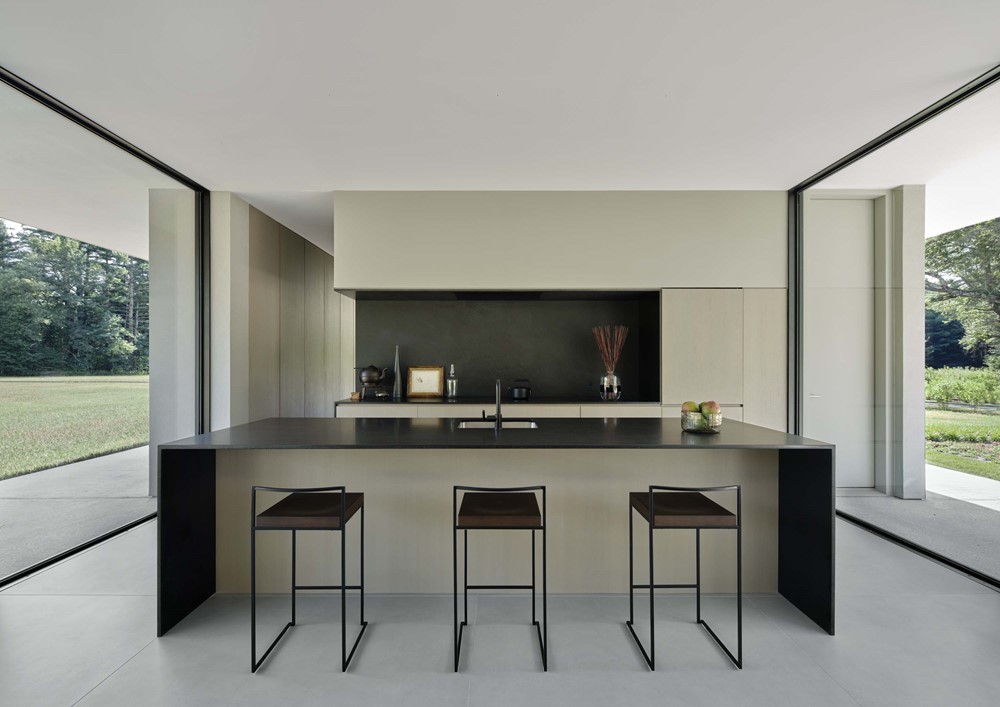


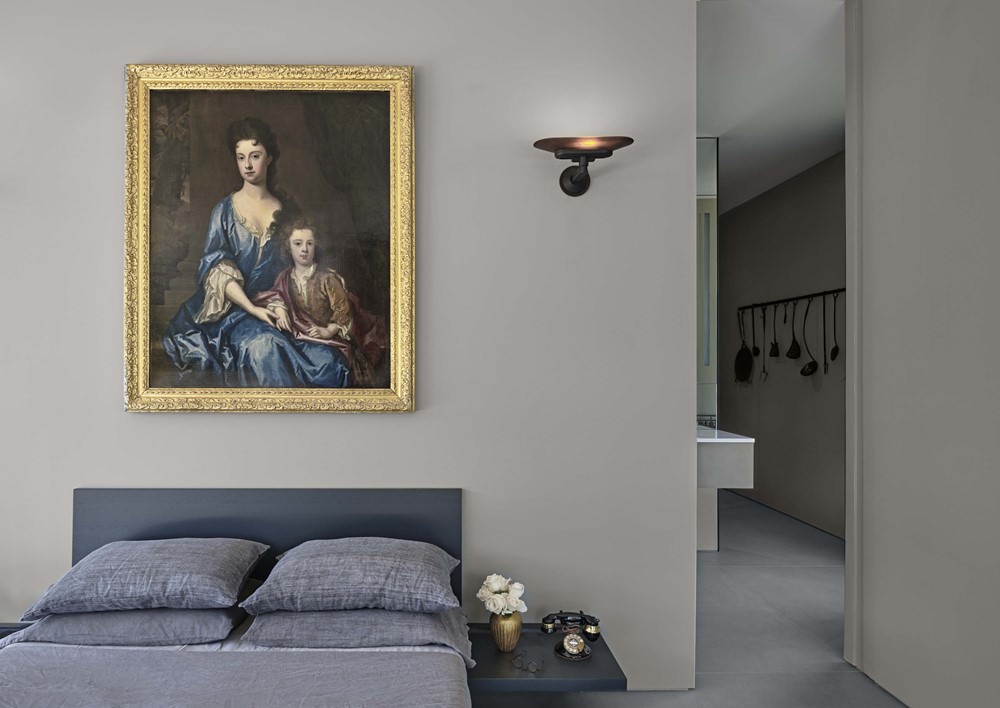



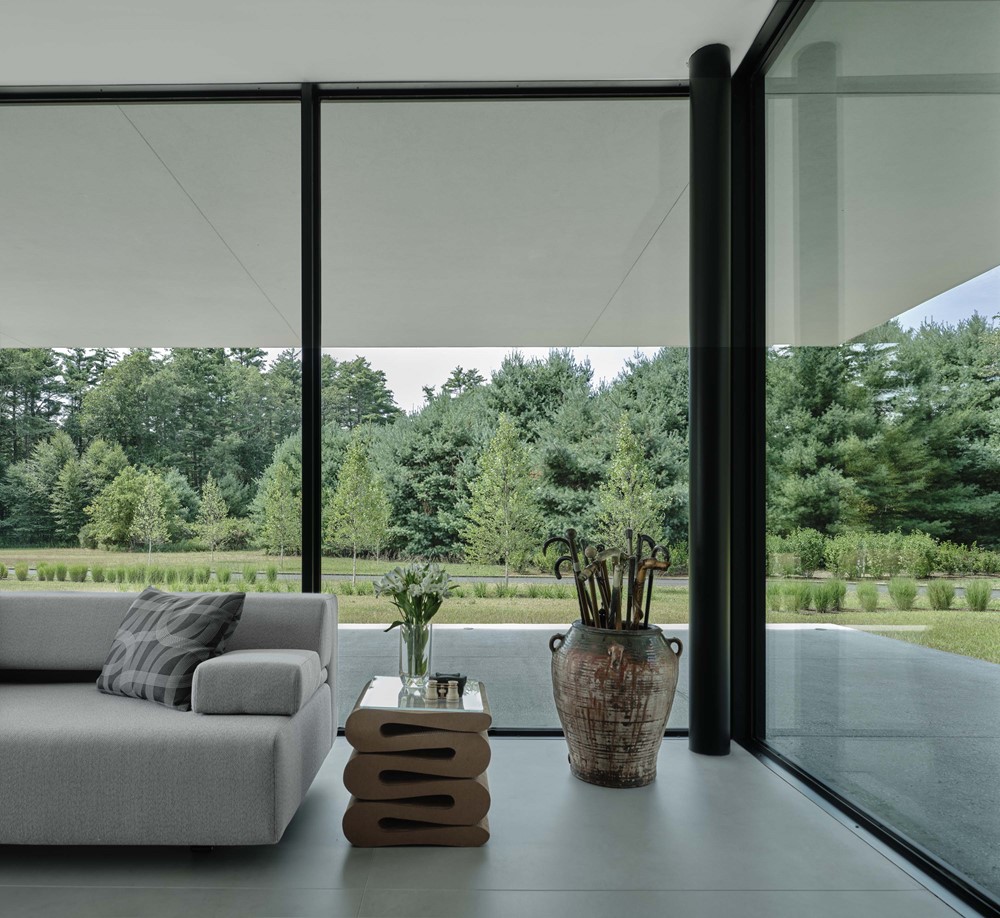
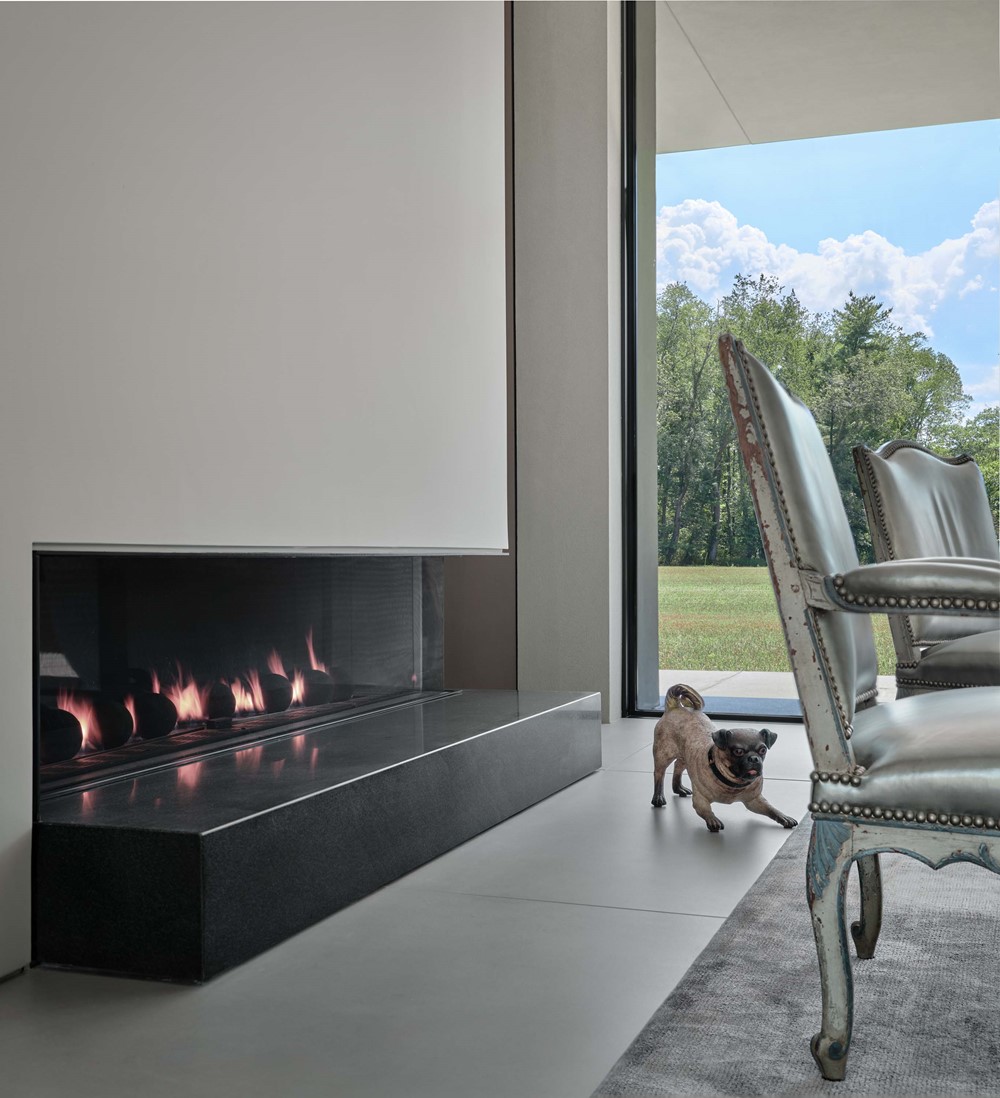
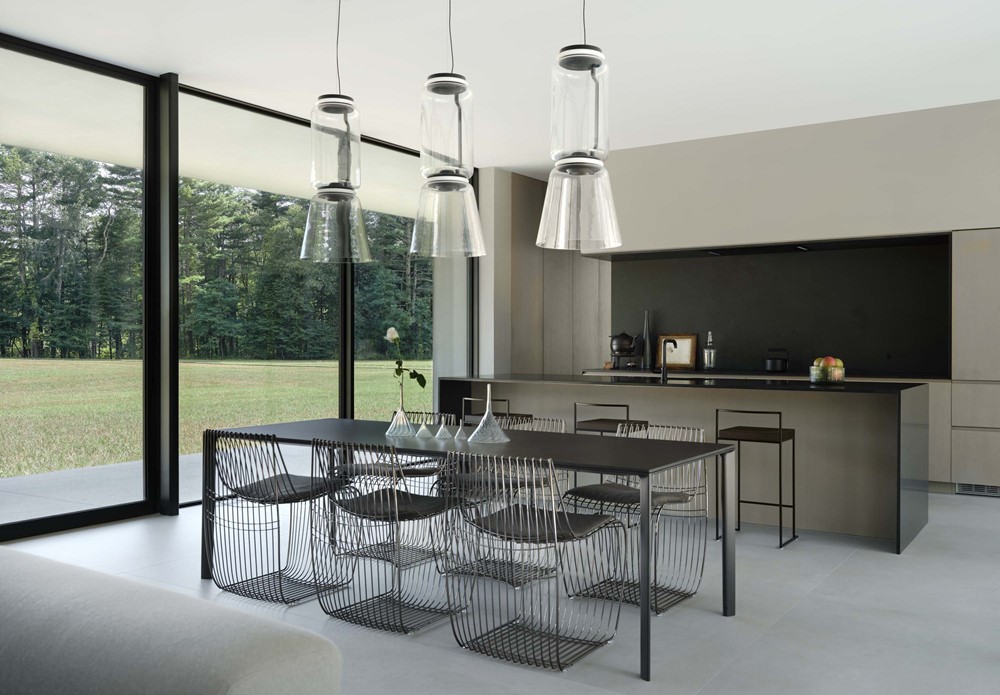
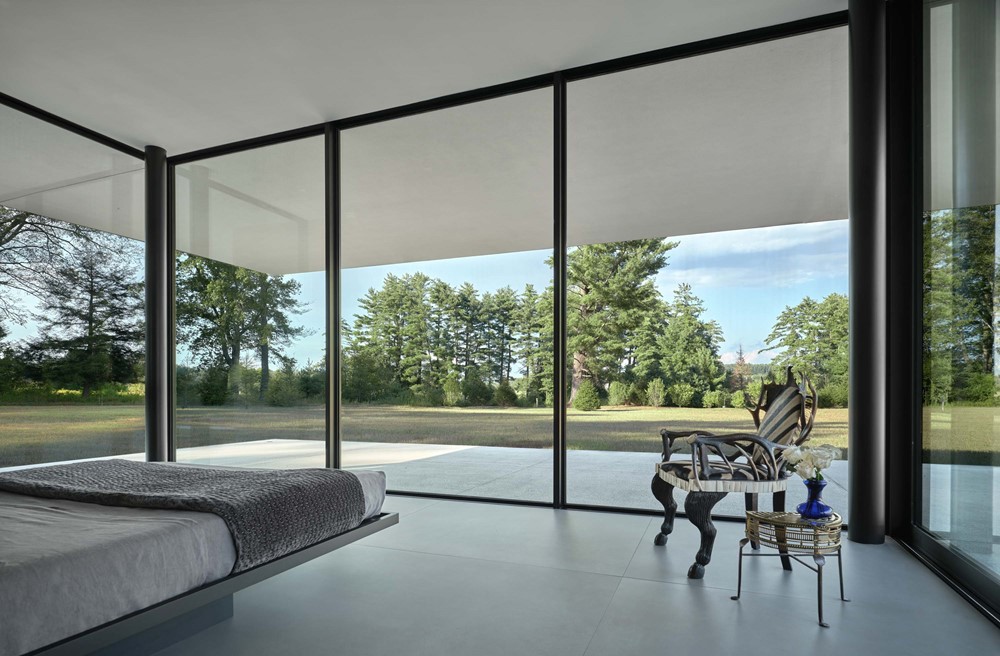




The property site was also unique. When selling off most of their original 40 acre estate, they kept a 9.75 acre parcel on which to build the new home. It was largely a fallow agricultural parcel fringed by large old-growth trees. The property site was a huge open field serving as a blank canvas for anything Specht Architects proposed.
“The architectural solution started with the approach sequence. From the main road the property is entered through a grove of large trees and after cresting a gentle rise in the land, a pastoral field opens up before you,” says Scott Specht, founding principal, Specht Novak. “We decided to make the most of this procession by locating the house at the far end of the field, as distant from the entry as possible. We also created a symmetrical house that is oriented on axis with the entry road, so that as you emerge from the trees you see a perfectly balanced composition before you.”
The house itself is an extreme departure from the owner’s previous residence. It is a 2,000 square foot single-story pavilion that is largely glass, with a thin floating roof that cantilevers 15’ from the perimeter walls. This provides protection from the sun and wind, limiting the need for AC and heating. A wraparound porch mirrors the roof and also “floats” above the landscape. The interior is very open and spacious as the living, dining, and kitchen space form the center of the house with a bedroom suite on each end.
The house is a gallery for the owners’ vast collections. The finishes include huge, seamless porcelain wall and floor surfaces, and European oak cabinetry throughout, sleek quartz in the kitchen. Lighting is provided by tiny, high-output recessed LED fixtures that are nearly invisible. Light switches, outlets, and other devices are concealed to allow for as pristine a space as possible. The contrast of this minimalism with the heavy collection of ornate art and objects is dramatic and adds to the otherworldly aspect of the house. In-wall built-in storage holds many additional objects so that the owners can rotate the collection frequently.
“We always questioned ourselves if we were up to the challenge of a new project and a new way of life, especially in our retirement. We evolved and refined our goals, becoming much more minimal — leaving behind all window treatments, privacy, clutter of wall switches and have embraced a new world of induction ovens, Google control lighting, and an app controlled house,” says homeowner, Patrick Annunziata.
“Scott gave us the suggestions and avenues of how to best utilize the homeowners’ antiques —- such as the 16th and 17th century forged fireside/kitchen tools hanging on the master bathroom wall and the ‘ Pantry Gallery Wall’ of the 17th, 18th, 19th century paintings. He created the corridor closets (behind the 10’ doors) where the overflow of precious personal treasures could be stored on glass shelves with LED lighting, ‘showing off ‘ for all to enjoy. Our minimal modern glass house does not feel minimal, but rather spiritual. The living experience is full and ever changing with the seasons, weather and daily animal activity,” says Patrick.
Architect: Specht Novak Architects
Photographer: Dror Baldinger



